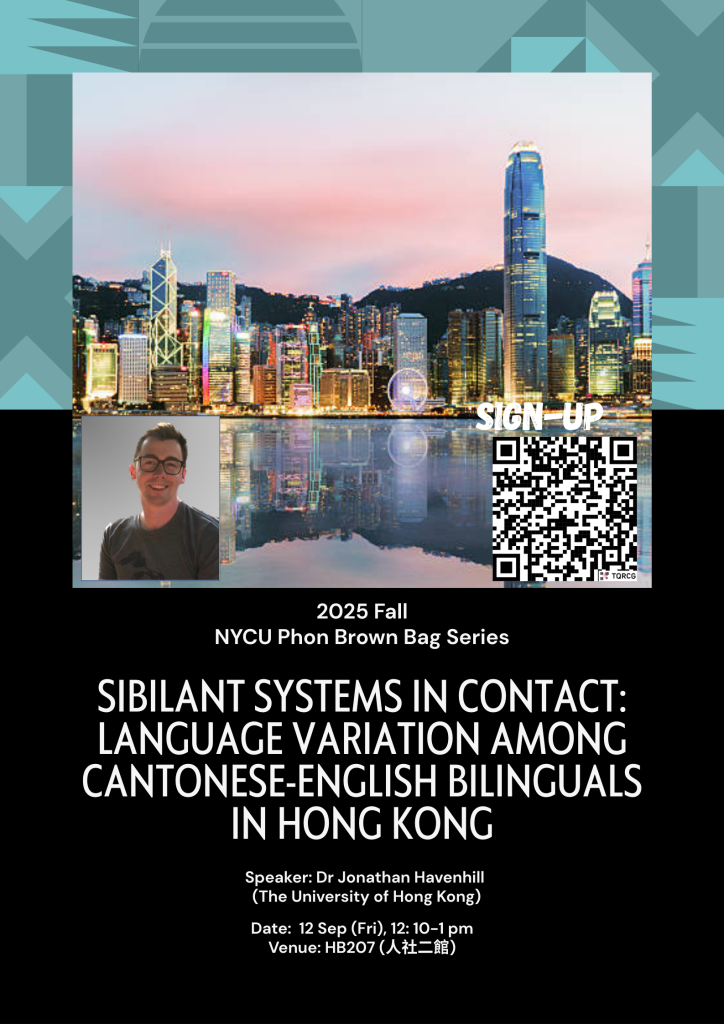Abstract: In this talk, I present new articulatory and acoustic data addressing language acquisition, contact, and change among Cantonese-English bilinguals in Hong Kong. The focus is on the production of the Cantonese sibilants /s, ts, tsʰ/ and the English sibilants /s, ʃ, tʃ, dʒ/. Descriptive work has suggested that Cantonese /s, ts, tsʰ/ exhibit vowel-conditioned and interspeaker variability, with experimental studies finding gradient rather than categorical variation. In contrast, sociolinguistic studies argue that younger Cantonese speakers produce distinct alveolar [s, ts, tsʰ] vs. alveolo-palatal [ɕ, tɕ, tɕʰ] allophones, ostensibly as a result of recent contact-induced sound change. While the English and Cantonese sibilants exhibit partial phonetic and phonological overlap, the cross-linguistic mapping between the two has not been empirically established, a gap which this work aims to address.
Cantonese speakers with varying English proficiency were recorded using ultrasound tongue imaging with synchronized audio. Participants produced Cantonese /s, ts, tsʰ/ and English /s, ʃ, tʃ, dʒ/ in various vowel contexts, with acoustic and articulatory measurements analyzed using GAMMs. Vowel height and rounding influence the place of articulation for L1 Cantonese /s, ts, tsʰ/, but the degree of vocalic influence varies extensively by speaker and segment, accounting for disparities among earlier descriptions. Discrete allophones for /ts, tsʰ/ are observed for some speakers, while contextual variation for /s/ is gradient. Speakers further exhibit distinct articulatory strategies in L2 English depending on their L1 system. These findings have implications for theories of bilingual phonological representation and contact-induced change. Articulatory study of sociophonetic variables in multilingual communities helps us understand both how speakers categorize distinctive units across languages and how language contact drives the introduction and spread of linguistic variants.
Speaker bio: Prof. Jonathan Havenhill is Assistant Professor of Linguistics at the University of Hong Kong. His work involves the use of laboratory and experimental methods to examine the articulatory, acoustic, and perceptual patterns that underlie linguistic sound systems. Using ultrasound tongue imaging, he has conducted a series of studies investigating interspeaker variability in the production of American English vowel contrasts, including fronted variants of the high back vowels /u, ʊ, o/ and the low back vowels /ɑ/ and /ɔ/. His research interests extend to the role of visual perceptibility in misperception-based sound change and in the use of articulatory methods to account for typologically rare sounds, including occlusivized laterals in Hakka and doubly articulated fricatives in the Bantu languages Setswana and Sebirwa.

